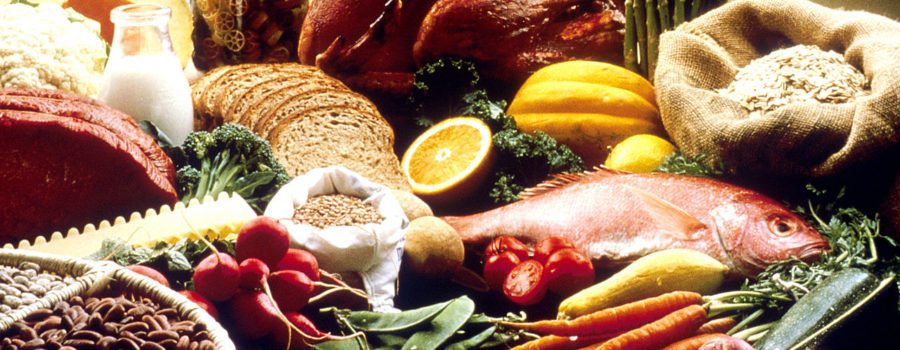It seems that someone is coming up with the next “best” diet every day now. And I’m sure you’ve heard of them all. First, someone says eggs and all fats are bad. Then someone says you need to cut out all carbs and sugars because those will kill you before your 30. Then someone comes along and says meat is the cause of all evils in the world. And, as you probably know, that is just the tip of the iceberg.
You could honestly take any one food group, and someone would have something awful to say about it, or that there should be a diet revolving around that food group. People think that by coming up with the “perfect” diet that this will lead to simplicity and peace of mind. However, all it really does is confuse the heck out of people, and they’ll maybe try a diet for a couple weeks or months but then move on after hearing about another study proving all of the harmful effects of the diet and go to the next best thing.
The result of all this? One gets nowhere, constantly ending up back where they started, regardless of whether or not their goal was to lose fat, gain muscle, or some other goal.
My Take on Current Diets
Thankfully, there is an easier way to go about eating your food and once you realize how simple it is you’ll wonder why you never started it in the first place. Now, I guess you could say that what I am about to tell you is considered a ‘diet’. But I just call it common sense.
So, what do I have to say to the diets that say “no carbs”, or “no fats”, or “only fruits and vegetables”, or “only drink grapefruit juice for the entire day, every other Wednesday” (kidding on that one, of course, I hope.)
Well, to all of that I say, those diets will never be optimal for you and will never be sustainable for the long term. See, the problem with all of the common fad diets is that they are focused on a quick fix or some magic solution that will automatically make you feel and look better. These diets are based around fast and aggressive results that only rely on the short term. And the thing is, some of these diets do actually work for the short term.
Problems With These Diets
But, there are two problems with this: Number one is that these diets can be good for the short term but hardly ever yield long-term results. Similarly, once someone goes off of these diets they more than likely gain most or all of the weight right back.
The second problem with most of these diets is that they diminish your overall quality of life by cutting out certain macronutrients, or whole categories of foods. Your body needs all types of foods to be functioning at its best and to ensure that you’re getting all of the necessary vitamins and minerals.
As mentioned, the overall problem with these diets is that they aren’t focusing on principles and habits; they’re just focusing on quick fixes and magic solutions. So, in order to truly have an optimal diet where you look and feel your best, you need to start focusing on basic principles and habits.
Focus on Principles
So, what are these basic principles then? Well, I’ve come to realize that whether you want to gain muscle, lose fat, or just simply feel better and have more energy, you should really start following three basic principles:
-Focus on Whole, Single-Ingredient Foods
-Do Not Exclude any of the Natural Food Groups
-Practice Intermittent Fasting (or some form of self-discipline related to caloric intake)
Include Whole, Single-Ingredient Foods from All Food Groups
You’ll notice I included principles one and two together, and this is because they are very interrelated.
What do I mean by one ingredient? Well here, in case you don’t understand. Let’s take an apple. What’s in an apple? An APPLE. That’s it. I’m sure you understand.
Now, it truly can be this simple if all you eat are foods that are natural. So, after considering all of the foods in existence, what does this leave us with then? Well, in essence, the foods we SHOULD be eating; foods that aren’t going to cause us to feel and look like crap, but rather provide quality nourishment for our bodies and minds.
And as I said in point number two, do not restrict any food groups! You need a well-rounded selection of foods to provide all of the macronutrients (protein, fat, carbohydrates) and micronutrients (vitamins, minerals, antioxidants) for your body.
So, just to make sure you understand what you can eat, here is a general overview of what should be included in your diet:
All meats, eggs, all vegetables, all fruits, honey, things like potatoes and rice, nuts and seeds, natural nut butter, and I’ll even throw in dairy because that is essentially just altered forms of milk with a few ingredients. But you can also choose to eliminate dairy if you want.
If you eat all of these foods, and a variety of them every day you will surely be meeting your macronutrient and micronutrient needs. Now, In order to understand what you are getting from each different food, I will create two very broad categories that list the macronutrients and micronutrients you get from eating certain foods. The two categories are “animals” and “plants”.
Animals (muscle and organ meat, eggs, dairy, seafood)
If you are eating a variety of foods from this broad category you will surely get plenty of quality protein and fat. In addition, all animal products are rich in B-vitamins, vitamin A, vitamin D (fatty fish), calcium, potassium, chromium, iron, selenium, and zinc. Now, while all foods from this category are overall good for your health, there are a few powerhouses as well.
These include liver, grass-fed beef and bison, whole eggs, salmon, and shellfish. If you can, make sure to get some of these powerhouse foods in your diet as they are some of the most nutritionally dense animal products on the planet. But don’t worry if you can’t, as long as you’re eating a variety of foods from this group you will easily be covering your needs.
Plants (fruits, vegetables, tubers, rice, nuts)
While the animal products provide plenty of the healthy fats and protein, all of the plants provide quality carbohydrates as well as an abundance of vitamins, minerals, and antioxidants. Some of the most prevalent vitamins and minerals from plants include some of the B-Vitamins, vitamin C, vitamin A, vitamin E, vitamin K, calcium, magnesium, potassium, manganese, and zinc.
And as with the animal foods, there are also some premier foods from the plant group that are the most nutritionally dense. These include cruciferous vegetables such as watercress, leafy greens such as spinach and chard, all types of beans, all types of berries, potatoes and sweet potatoes, and Brazil and hazelnuts. Again, strive to get these foods into your diet as often as possible, but don’t worry if you can’t get them that often; as long as you are eating a variety of foods from this group and consuming five to six servings each day you will be set on reaching your vitamin and mineral needs.
Intermittent Fasting
So, now that you have a good understanding of what foods you can be eating, I really want to bring to light the power of intermittent fasting. Now, you may be thinking “well, isn’t this just another fad diet like you said you were against?” And it’s a good question.
However, the reason I really want to include intermittent fasting is that I don’t view it as a diet. Remember, most diets aren’t based on principles and habits but rather on some magic solution. Intermittent fasting, however, isn’t some quick fix. Rather, it is a principle in which you base around the timing of your food. Not WHAT you eat. It is ultimately about controlling your relationship with food. In addition, intermittent fasting has been proven to have many mental and physical benefits, which I will get into later.
I have researched many different methods of practicing fasting, and after all of this, I have found intermittent fasting for shorter periods every day is the most sustainable for the long term. To do this, you simply allow yourself an 8-hour eating window and then fast for 16 hours. Now, you might be thinking that this is a long time to wait, but you have to understand two things:
Number one- Every day already you most likely go without food for at least 12 hours. Let’s say you eat breakfast at 8, lunch at 1, and dinner at 6. Of course, you might have some snacking in there in between lunch and dinner and then after dinner around 8 or 9 pm. But still, I would assume that most go anywhere from 10-12 hours already without eating.
Number two- You can strategize your fasting period so you are spending half, if not more, of your fast sleeping. Now, I’m going with the assumption that you are in bed for around eight hours, so in doing so you are sleeping through half of the fast. This makes it much easier.
How to Implement IF
With those points out of the way, here is how I would implement intermittent fasting. Simply create an eight-hour window for yourself in which you eat all of your food, and then, as a result, there will be a 16-hour window where you don’t eat anything.
For example, let’s say you usually eat your last meal at 7 pm. So, instead of eating breakfast the next morning at 8 (or whenever it would be), you simply wait until 11 am to eat your first meal. This can be a little tough to get used to at first, but I can assure you that your body will adapt. I have been doing intermittent fasting for over a year now and I can definitely tell you there are benefits.
Most of the benefits I have experienced go right along with all of the distinguished studies out there so, if you like, you can look into those further. The main benefits of intermittent fasting are as follows:
-Improves insulin sensitivity which optimizes blood sugar levels and burns fat.
-Increases levels of Human Growth Hormone which, among other things, is involved in cellular regeneration and lipid catabolism (fat breakdown).
-Improves brain function and provides more stable energy levels.
-Increases metabolism, leading to faster weight loss.
Personally, practicing intermittent fasting has definitely given me much more stable energy levels throughout the day, especially from the time I wake up (8 or 8:30) until I eat my first meal (11 am). In addition, fat loss has become much easier for me and I manage to lose fat rather quickly and almost effortlessly.
Fat Loss, Muscle Gain, Maintenance?
Now, if you’re reading this article on dieting I am assuming the majority of you would like to lose fat, but some of you maybe want to gain muscle or just simply maintain your current body weight, but to do so in a healthier manner; so, you may be thinking, “Well, how about calorie counting?”
And it is a great question. Ultimately, I like to stay away from calorie counting and truly believe that if you focus on intermittent fasting and eat whole, single ingredient foods, then you will achieve the body you want. However, if you would like the peace of mind from having a certain number of calories to be eating then here is what I would recommend:
Fat Loss: BW in lbs x12 (Example: 200 lbs x 12 = 2,400)
Maintenance: BW in lbs x 14 (Example: 200 lbs x 14= 2,800)
Muscle Gain: BW in lbs x 16 (Example: 200 lbs x 16= 3,200)
Obviously, these numbers are very generic, but it is a great place to start from. From here, I would evaluate your progress after every week, and adjust your intake accordingly.
In addition to these caloric recommendations, I do recommend certain tweaks to your diet based on your goals.
If your goal is fat loss, then your diet should consist of a lot of meats, tubers, and vegetables, sprinkled in with some fruit, dairy, and nuts in moderation. The reason for this is because the latter foods are calorically dense, and you would have the potential to eat too much of them.
If your goal is to maintain, then your diet should consist of a balance of meats, vegetables, tubers, fruits, dairy, and nuts.
Finally, if your goal is to gain muscle then you should include a lot of meats, tubers, and vegetables, and you can load up on dairy, nuts, and fruit because this will make it easier to reach your necessary caloric intake.
Diet is THAT Important
I’m sure you all know that the way most of Americans eat today isn’t anything close to the ideal. More than anything, I just wish people were more aware of how their diets affect their overall health levels. In order to function at our best (mentally, physically, emotionally, physiologically), our diet NEEDS to be optimal. So many people underestimate the power of diet, but I’m hoping by reading this article today you have understood how diet affects you, and how to implement a more optimal diet.
I’m all about simplification and taking unnecessary complications out of certain aspects of my life, as it really reduces stress levels and allows me to focus more of my mental energy on the things that matter. And simplifying your diet is just another great tool to rid these unnecessary complications, and to free up some mental energy for other things you want to do.
Dieting has always been looked at as this complicated, impossible-to-figure-out maze. But, it really doesn’t have to be, and I’m hoping by reading this article you have a great understanding of how to implement basic elements such as whole foods and intermittent fasting, that will ultimately help benefit your overall quality of life and help you reach your goals.
References:
Zauner, C., Schneeweiss, B., Kranz, A., Madl, C., Ratheiser, K., Kramer, L., . . . Lenz, K. (2000). Resting energy expenditure in short-term starvation is increased as a result of an increase in serum norepinephrine. The American Journal of Clinical Nutrition,71(6), 1511-1515. doi:10.1093/ajcn/71.6.1511
Lee, J., Duan, W., Long, J. M., Ingram, D. K., & Mattson, M. P. (2000). Dietary Restriction Increases the Number of Newly Generated Neural Cells, and Induces BDNF Expression, in the Dentate Gyrus of Rats. Journal of Molecular Neuroscience,15(2), 99-108. doi:10.1385/jmn:15:2:99
Barnosky, A. R., Hoddy, K. K., Unterman, T. G., & Varady, K. A. (2014). Intermittent fasting vs daily calorie restriction for type 2 diabetes prevention: A review of human findings. Translational Research,164(4), 302-311. doi:10.1016/j.trsl.2014.05.013
Ho, K. Y., Veldhuis, J. D., Johnson, M. L., Furlanetto, R., Evans, W. S., Alberti, K. G., & Thorner, M. O. (1988). Fasting enhances growth hormone secretion and amplifies the complex rhythms of growth hormone secretion in man. Journal of Clinical Investigation,81(4), 968-975. doi:10.1172/jci113450




